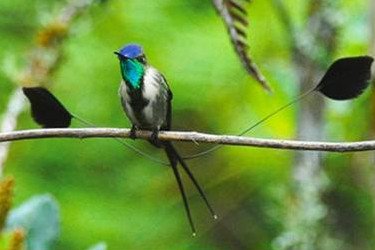CAMBRIDGE, Mass., Aug. 22 (UPI) -- Genome sequencing over the last decade has revealed birds to lack the gene T1R2, one of two that combine to allow animals to taste sugar. Alligators, on the other hand -- one of birds' closest relatives -- have both the necessary sweet tooth genes. The discrepancy suggests that as birds split off from dinosaurs on the evolutionary family tree, they lost their taste for sugar. Yet, hummingbirds are nectar fiends -- they can't get enough. But why? And how?
Most vertebrates have three taste-related genes; they combine in different ways to allow for different tastes. Now, new research suggests hummingbirds have evolved their T1R1 and T1R3 sensors -- typically used to detect umami or savory flavors -- to pick out sugary notes.















